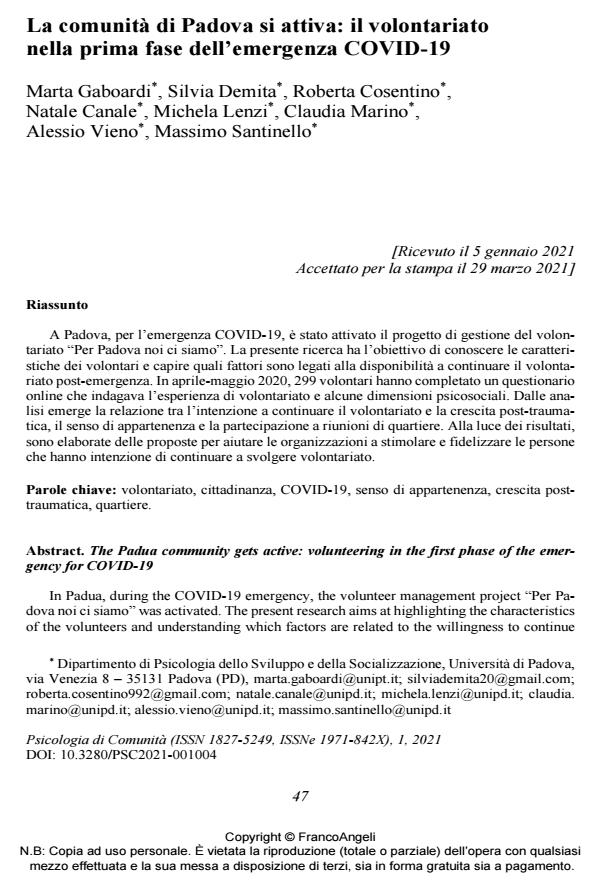The Padua community gets active: volunteering in the first phase of the emergency for COVID-19
Journal title PSICOLOGIA DI COMUNITA’
Author/s Marta Gaboardi, Silvia Demita, Roberta Cosentino, Natale Canale, Michela Lenzi, Claudia Marino, Alessio Vieno, Massimo Santinello
Publishing Year 2021 Issue 2021/1
Language Italian Pages 16 P. 47-62 File size 181 KB
DOI 10.3280/PSC2021-001004
DOI is like a bar code for intellectual property: to have more infomation
click here
Below, you can see the article first page
If you want to buy this article in PDF format, you can do it, following the instructions to buy download credits

FrancoAngeli is member of Publishers International Linking Association, Inc (PILA), a not-for-profit association which run the CrossRef service enabling links to and from online scholarly content.
In Padua, during the COVID-19 emergency, the volunteer management project "Per Pa-dova noi ci siamo" was activated. The present research aims at highlighting the characteristics of the volunteers and understanding which factors are related to the willingness to continue volunteering post-emergency. In April-May 2020, 299 people completed an online question-naire designed to investigate the volunteer experience and psycho-social dimensions. Results revealed a relationship between intention to continue volunteering and post- traumatic growth, sense of belonging, and participation in neighborhood meetings. In light of these findings, op-erational proposals are developed to help organizations stimulate and retain people who intend to continue volunteering.
Keywords: volunteering, citizenship, COVID-19, sense of community, post-traumatic growth, neighborhood.
Marta Gaboardi, Silvia Demita, Roberta Cosentino, Natale Canale, Michela Lenzi, Claudia Marino, Alessio Vieno, Massimo Santinello, La comunità di Padova si attiva: il volontariato nella prima fase dell’emergenza COVID-19 in "PSICOLOGIA DI COMUNITA’" 1/2021, pp 47-62, DOI: 10.3280/PSC2021-001004